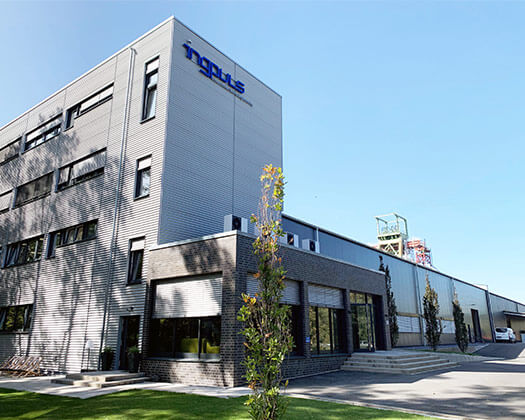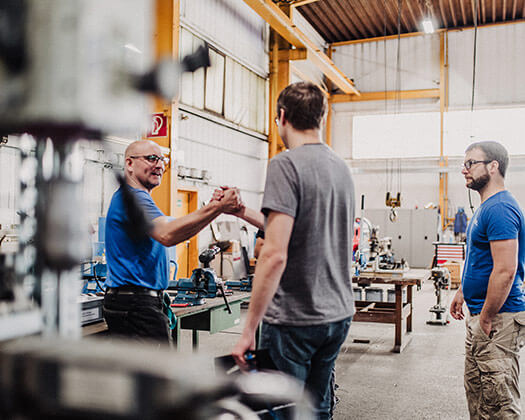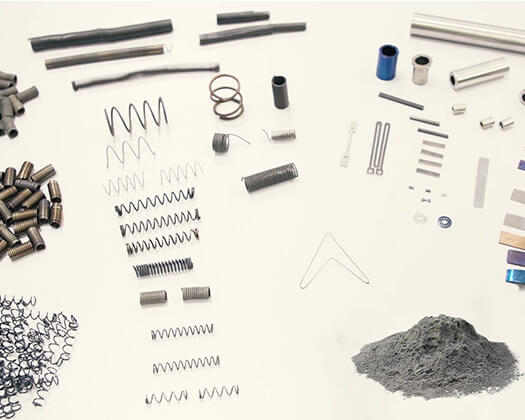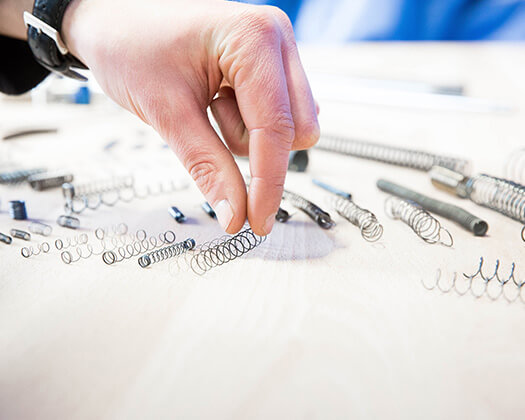What is the one-way effect?
In the one-way effect, a material is apparently plastically deformed in its low-temperature phase and then returns to its original shape when heated. The low-temperature phase martensite is characterized in SMA by the presence of certain crystallographic regions within the martensite grains, so-called twins. If a stress is applied to a component as a martensitic phase, twin variants grow above a critical stress level at the expense of other variants. In this case, the material can be deformed at a low stress level. In the high-temperature austenite phase, there is only one way in which atoms can arrange themselves in the lattice. Thus, when heated above a critical temperature, the material returns to its original shape and remains in this shape after cooling to the low-temperature phase without the influence of a mechanical stress. Therefore, to take advantage of this effect in cyclic applications, an external mechanical stress is needed to deform the component into a different geometry when cold. This is referred to as an extrinsic two-way effect.
How the one-way effect works
In the cold state (martensite), an SMA spring can be deformed, for example, by a small mechanical load. If the spring is then heated (austenite), its original shape is restored. When the spring cools down again, it does not change its shape by itself, since this is a one off shape change, hence it’s referred to as a one-way effect. In order for this effect to be usable in cyclic applications, an external mechanical stress is required. This deforms the SMA component into a different geometry in the cold state. This is the extrinsic two-way effect.






